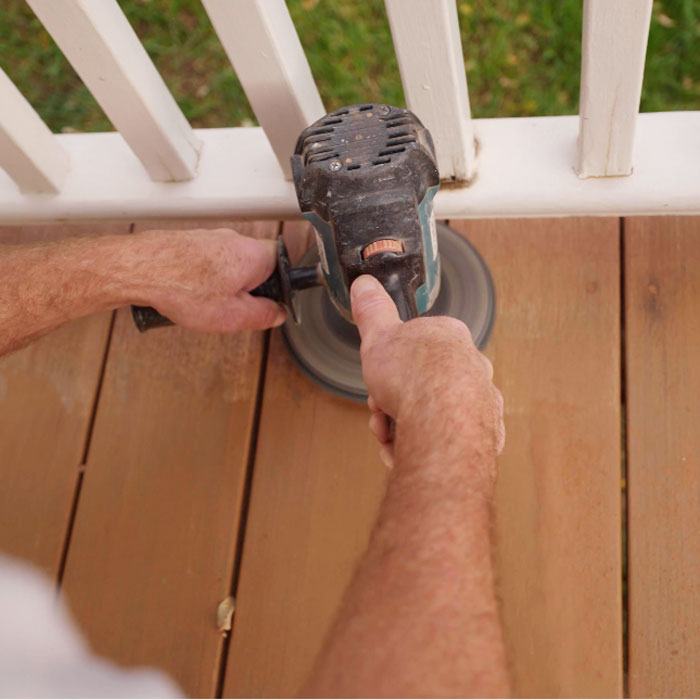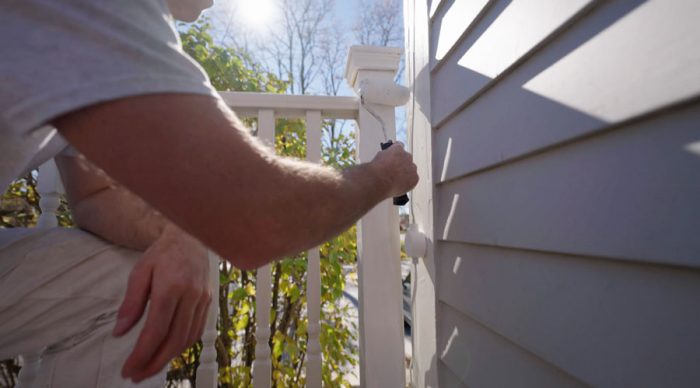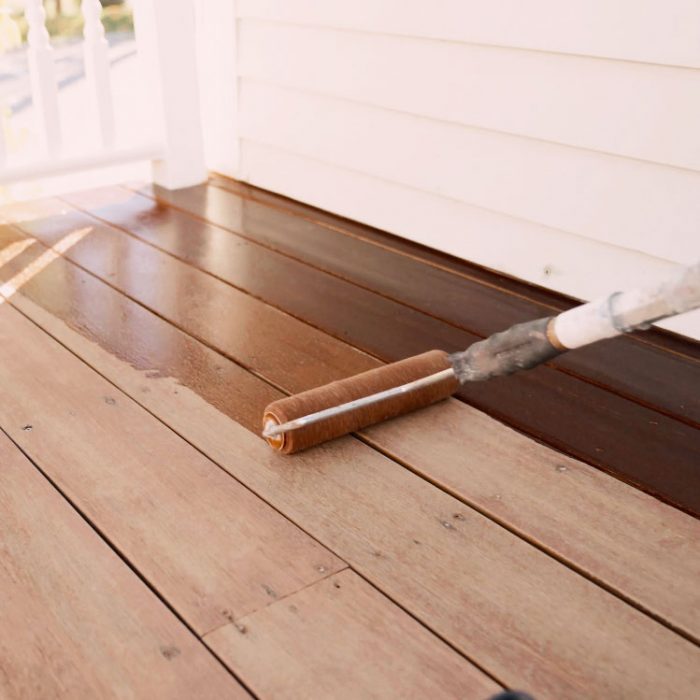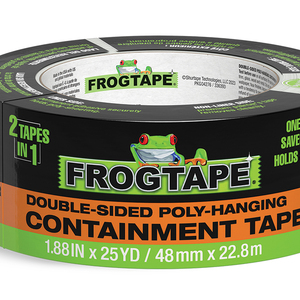Refinish A Weathered Deck
Exposure to sun and weather eventually can lead to a fading or peeling deck. In this video, learn how to properly prep and refinish a deck with ZAR Deck & Siding stain.
Sponsored by ZAR
Some of the telltale signs that your weathered deck needs refinishing include peeling, fading, or wear wherever there’s heavy traffic flow. But another sign that may not be so obvious is that your paint or stain can actually get dirty more quickly when worn out, so you’ll find yourself having to wash the deck more frequently. A fresh coat of paint or stain will help the deck resist dirt and the elements. Here’s our process.
Prep the surface
The only way to get a long-lasting professional finish is with great prep. The first step is to power wash. We’re not focused on removing the loose paint with this process—we want to do that with scraping and feather-sanding. Here we’re going after the dirt.

Once the railings are fully prepared, we prep the floor. Our company uses an Onfloor machine. It’s a large-surface profiling machine with 36-grit sandpaper, which seems very coarse, but on this project we’re going over mahogany, and some of the boards are cupped, so we have to really go at it with an aggressive grit. After, we follow up with finer grits.
We sand the edges of the deck with a disc grinder and 50-grit sandpaper. Once done, we go over the entire deck with a nylon brush to loosen dust and then use a blower to remove it from all the cracks and clean off the surface.
Next we caulk any imperfections. When caulking, we’re trying to close up any areas where water might get in and cause paint to prematurely fail. This step is also for aesthetics—we don’t want to see any gaps in the wood, between the posts and the rails or any of the balusters.

Once the railing is prepped, we move onto painting the surface. For a robust finish, we use ZAR NuDECK in the White Dove to match the existing trim on the building. It’s very thick and is able to fill all cracks and imperfections in the wood.
Apply your stain

After railings are finished, it’s time to finish the decking. On this job, we’re using ZAR Deck & Siding semi-transparent classic oil finish in Oak Brown. Unlike on the railings, where we applied the paint liberally as thick as possible, on the deck we apply the stain very thin. We start with a roller and apply just enough to give complete coverage to the whole surface.
Then we come by immediately with the brush to make sure there are no heavy areas and work the stain into the fibers of the wood. It’s important to work with the grain of the wood so the stain will lay off perfectly; if we go against the grain of the wood, we’ll see imperfections and marks from the stain.
This product was excellent to work with. It laid down beautifully and was the best semi-transparent oil stain I’ve used in quite some time.
RELATED STORIES

























